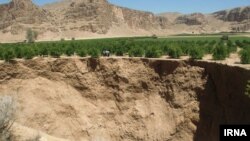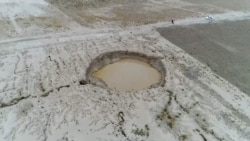Officials in Iran have again warned that the ground around the capital city Tehran is sinking and it will not be long before the subsidence begins affecting the center of the 10-million population city.
In Summer the head of Mapping Organization had warned that the subsidence was picking up pace and approaching the Azadi monument.
On October 30, the technical deputy of the organization told the semi-official ISNA news website that some electricity towers have tilted as a result of the land subsidence.
The ground in areas around Tehran is sinking at a rate of 26 centimeters or 10 inches a year, Yahya Jamour told ISNA, and this is the reason the electrical grid faces problems.
Ali Beytollahi the head of Iran’s Seismology Center also says that in the Varamin region near Tehran three high-voltage electricity lines and railroads are facing dangers.
The ground subsidence is not limited to Tehran. Jamour says that most plains in Iran are sinking but the phenomenon is threatening the center of the capital city. The estimated rate of subsidence in Tehran is 18 centimeters or close to 8 inches.
The main reason is depletion of underground water reservoirs, as years of drought and water mismanagement led to overuse. In some parts of Iran large sink holes have appeared.
Last year, the official news agency IRNA reported that in some areas the ground has subsided 54 cm or nearly two feet, which is 140 times the world standard considered critical.






